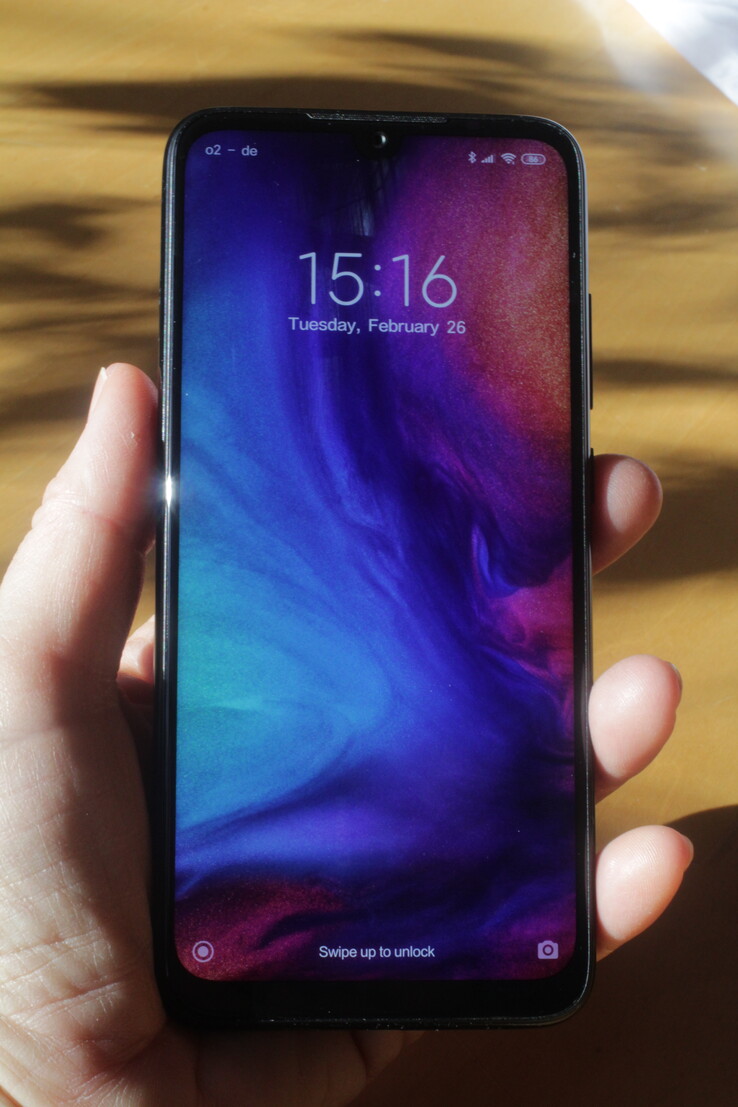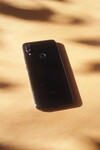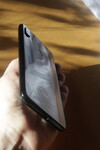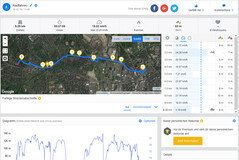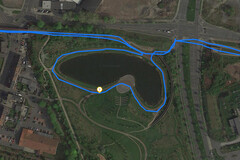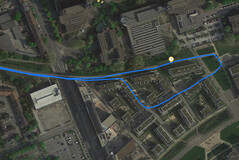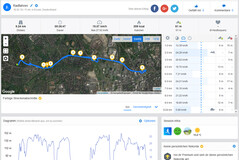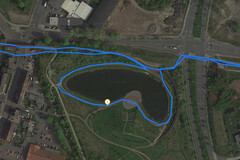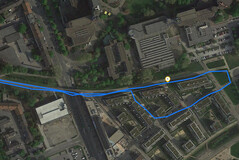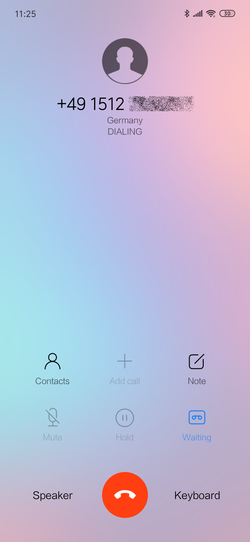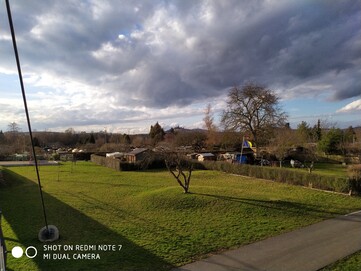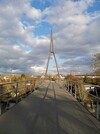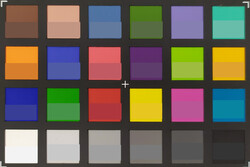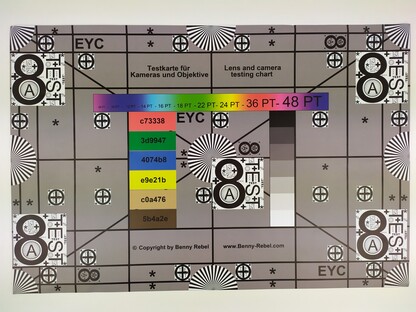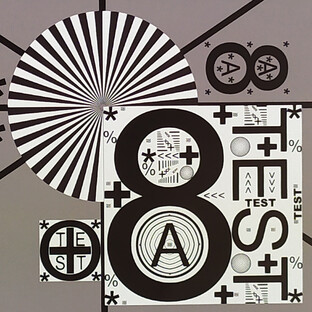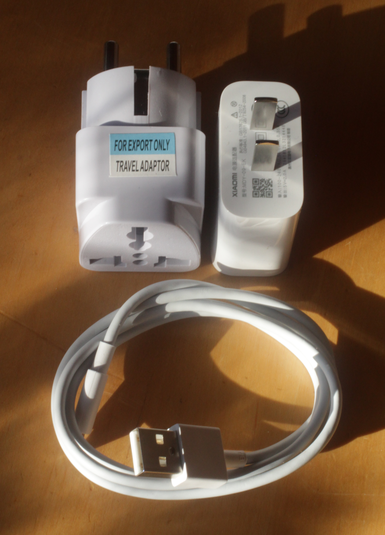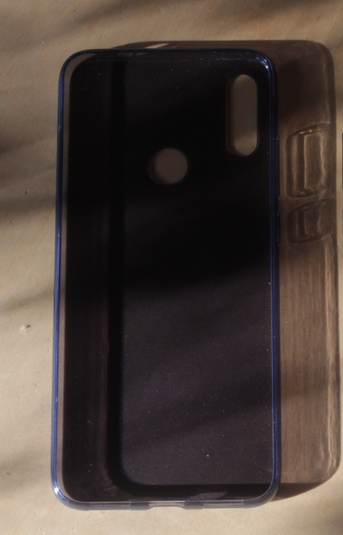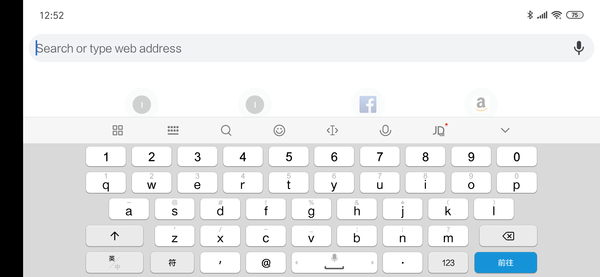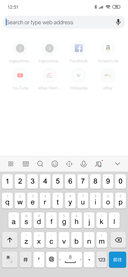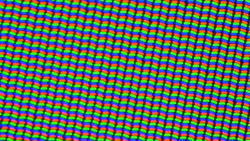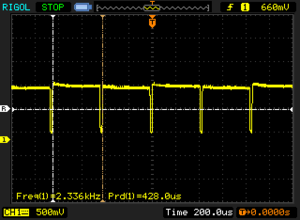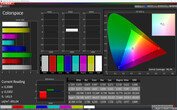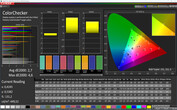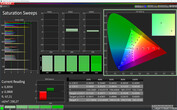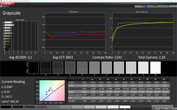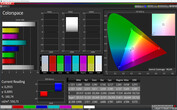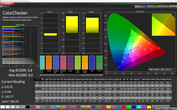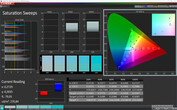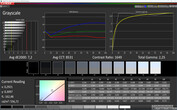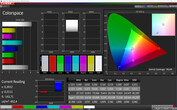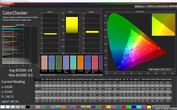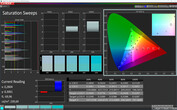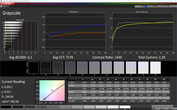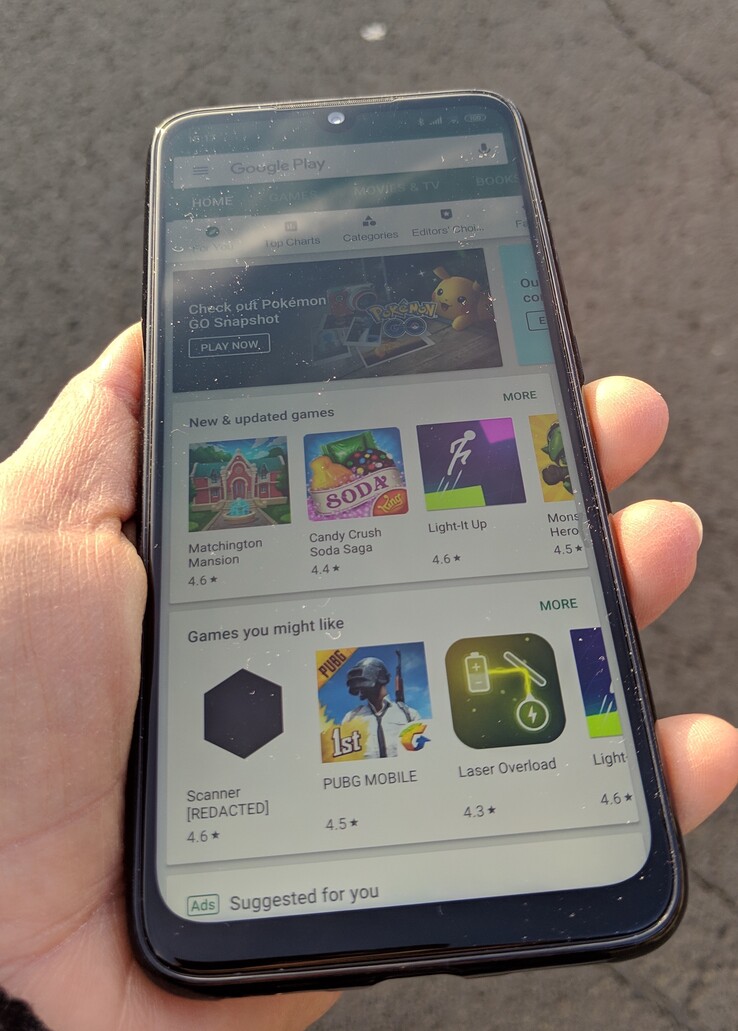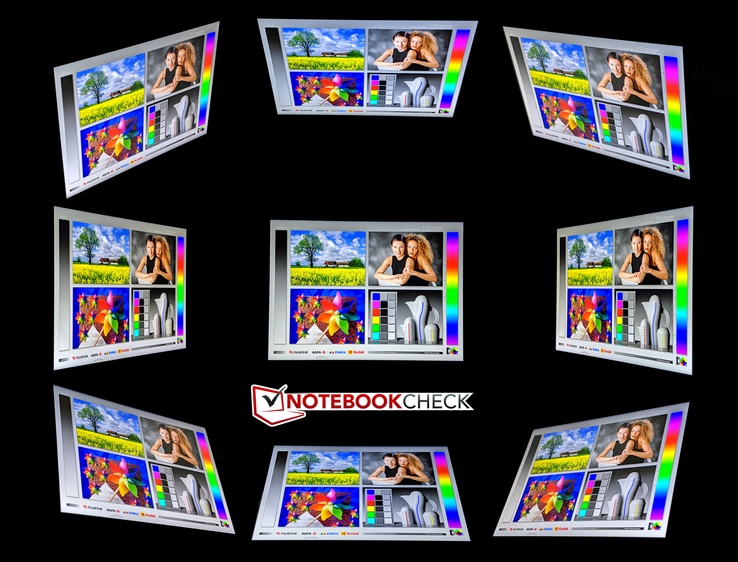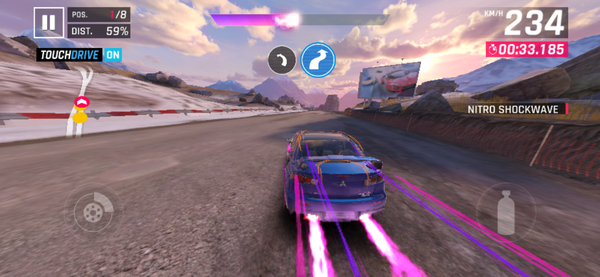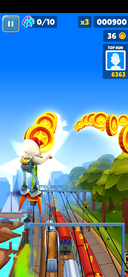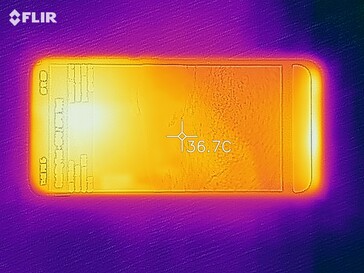Xiaomi Redmi Note 7 Smartphone Review
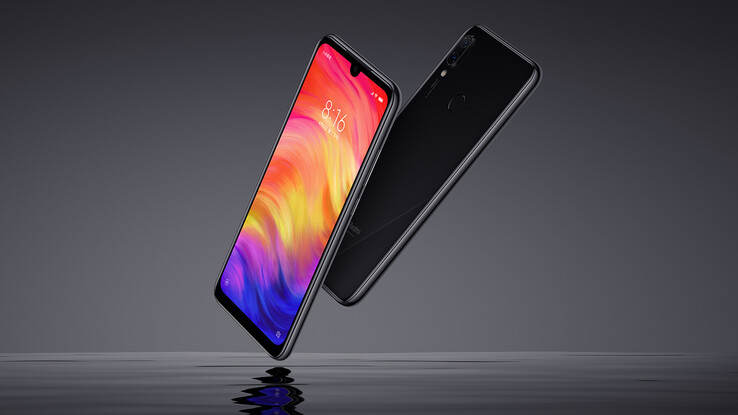
In the past, the Xiaomi Redmi mid-range smartphones from the Chinese electronics manufacturer's portfolio have been in a similar device class as Samsung's Galaxy J smartphones. The Note model of the Redmi family has since been through a few iterations. By the way: The name Note is a remnant of a time, when 5.7 inch displays made phones look more like a notebook than a smartphone; the name does not imply digital stylus support.
Now, Xiaomi is trying to strengthen the Redmi brand name by making it a sub-brand - the packaging will no longer carry the Xiaomi branding. This newfound independence could, in the long run, elevate Redmi to a similar status as Huawei's Honor. In that case, we could also expect higher-end Redmi models. The Redmi Note 7, which had been announced before the Xiaomi Mi 9, is the first smartphone with a 48 MP camera after all.
The Qualcomm Snapdragon 660 inside of the Note 7 is a mid-range SoC. It can also be found on the Xiaomi Mi 8 Lite, BQ Aquaris X2, and the Nokia 7 Plus, which is why we incorporate these smartphones into our review. We will take a look at Huawei's mid-range P20 Lite and the Xiaomi Mi 8 as well. While the latter represents the higher-end Xiaomi Mi series, it could still make for a good alternative since its price should drop significantly after the recent announcement of the Mi 9.
Case – Redmi shines
Xiaomi's shop lists the Redmi smartphone in dream blue, twilight gold and black. All three variants have a glossy finish. Thankfully, the glossy rear is fairly resistant to fingerprints.
The camera protrudes noticeably from the case, resembling the back of the Moto Z3 Play without moto mod. The protruding optics also prevent it from being placed flat on a table, which makes using it in this state a wiggly experience.
The controls on the sides, standby button and volume control have some clearances, but they can easily be located and used regardless. The same can be said for the fingerprint sensor that is easy to find with the index finger.
As with the Redmi Note 6 Pro, the display sits on top of the case. This time around, the rounded-off plastic chassis no longer tarnishes the overall impression however.
While Xiaomi has reinforced the display with Corning Gorilla Glass 5, there is no protection against dust or water. All in all, the chassis is rigid, which is not a given in this low price range: In our testing period, the Redmi Note 7 was available via the web shop of tradingshenzhen.com for as little as 207 Euros (~$235); usually it sells for just under 230 Euros (~$261).
Features - The Camera makes the Difference
The Redmi Note 7, which costs just 130 Euros (~$148) in the European Xiaomi shop, sold more than 100.000 units in just a few minutes - this is in part due to the uncommon features combined with its price: No other smartphone in this price range boasts a 48 MP camera. QuickCharge 4.0 is exceedingly rare in this device class and the 4.000 mAh battery fairly large as well.
The combination of 4 GB of RAM and 64 GB storage space is not an unusual one and with 6 GB and 64 GB or 3 GB and 32 GB, respectively, alternative choices are limited. Expanding the storage with a microSD card causes you to lose the dual-SIM capabilities of the Note 7, since there is only one slot for either a memory card or a second SIM card.
The USB type-C port is barely worth mentioning at this point. However, Xiaomi also uses it for audio output, which is less self-evident, while still providing a 3.5 mm jack for traditional headsets.
Finally, Qualcomm's Snapdragon 660 is not exactly a highlight and while the Redmi Note 7 is notably equipped with an FM radio, it does not support NFC.
Software - Chinese Version requires additional Setup
Android 9 with security patches from January 5th (as of early march) is installed on the test device.
On the Redmi Note 7, MIUI version 10.2, which is the user interface developed by Xiaomi, is used on top of the Android operating system. The default Android buttons can be hidden if desired and gestures, such as those of Huawei's EMUI, can be used instead. The gesture controls are intuitive and slightly more straightforward than the native Android 9 gesture controls.
While we are testing the Chinese version here, an international version has since been released. Those who still opt for the Chinese custom ROM should be aware of the following: If you are not able to understand the offered Asian language, you can only choose English as an alternative system language. This affects most of the retroactively installed apps and games as well, even if they are installed from the German Play Store. Here, apps with integrated language management are the exception.
According to the manufacturer, the Play Store is supposed to come preinstalled. If, as in our test device, this is not the case, a seperate installation has to be performed. That said, some apps which are typically available on the German Play Store are not listed on the Chinese phone. The majority of preinstalled apps in Mandarin can be uninstalled; some apps belonging to the MIUI ecosystem such as the weather app are excluded from this however. For example, while you can install the Chrome browser, the preinstalled Chinese web browser cannot be removed.
There is also an MI AI app on the Chinese test device, which can provide additional intelligent assistance to users. MI AI requires a lot of permissions in order to be fully functional however, and currently only supports Mandarin.
Communication and GPS - No NFC for the Note 7
Since the nearfield communication technology is required for the wireless payment methods that are up and coming, smartphones without NFC (such as this one) have become exceedingly rare.
According to our measurements, the Mi 8 from Xiaomi completely outclasses the competition in this category, which is to be expected. Using our reference router Linksys EA 8500, the two smaller Xiaomi smartphones were able to reach decent download speeds of around 350 Mbit/s. The upload speeds varied widely however, causing it to lose its edge over some competitors while still performing better than average.
The network coverage of our Chinese model is severely limited. Both the GSM as well as the UMTS network lack several frequencies common in North and South America. The coverage is particularly lackluster inside the LTE network, where only the B1, B3, B5, B7 and B8 bands are supported. Thus, it not only lacks multiple frequencies common in America, but numerous frequencies common in Europe as well.
The now available international version at least supports the LTE band 20 on top of the aforementioned ones, which is relevant for Europe.
The Note 7 officially supports the navigation satellite systems GPS, GLONASS and Beidou. Furthermore, the GPS-Test app registers Galileo and SBAS support. Those wanting to plan trips in the living room will have to enable A-GPS as well: The test device's reception is very weak indoors and a satellite uplink takes a long time to establish after which the phone only provides an imprecise location even when close to the wall.
Telephony and Call Quality
If you use the Redmi Note 7 with two SIM cards, the second card blocks the slot for the otherwise available storage expansion. Both slots fundamentally support 4G, although this can be deactivated in the telephony settings. VoLTE capability is available as well, provided your carrier supports it.
Xiaomi uses its own telephony app. Its luxury features include a direct link to the manufacturer's notes app and the ability to record calls. The record mode can be selected while a connection is still being made, which activates it as soon as the conversational partner accepts the call.
Calls are accompanied by a minimum amount of static. While the conversational partner can be understood clearly during normal conversation, the outgoing voice sounds slightly overmodulated. Starting at medium volume levels, the same can be said for the incoming voice when using a headset or the speakerphone.
Cameras - Artificial Intelligence for Front and Main Camera
Even the front camera, which has a relatively high resolution of 13 MP, benefits from AI-assisted software features. Although it only has a fixed-focus lens, it is able to recognize faces in the portrait mode, sharpening them and blurring out everything else, regardless of whether it is closer or farther. When we tried to portray the blossom in isolation, the entire image remained blurry, since the software was unable to recognize a face. It is also worth mentioning that even the front camera supports HDR.
The 48 MP sensor from Samsung on the back of the device is accompanied by a 5 MP depth sensor and a dual-LED. Aside from the AI mode that analyzes pictures and adjusts their colors, there is also a Straighten mode: It searches the subject for straight forms and lines, further straightening the picture while it is being taken. This can be useful for snapshots and for pictures where the smartphone cannot be held at eye level.
We compared the high-resolution pictures to those of the Honor View 20, which is equipped with a camera sporting the same fantastic resolution. While 48 megapixels is 48 megapixels, the camera software plays a crucial role as well: At first glance, the exposure of the Note 7's picture looks to be better, while the View 20's color representation is more natural. Zooming in on the pictures reveals a sharper portrayal of both the castle in the background and the twigs in front of it. Both cameras have an aperture of f/1.8.
In the default mode, both cameras shoot pictures at a resolution of 12 MP and the 48 MP are automatically divided by four when using HDR. Merging four pixels into one should theoretically allow the resulting pixel to benefit from the additional information. Here, the Honor's software does a better job than Xiaomi's: The houses behind the bridge (second picture) and particularly the clouds in the sky come across better, more natural and offer more details on the View 20. The Xiaomi smartphone blurs the house facades into washed-out areas.
This effect can be observed by looking at the meadow as well. We also compared the Note 7 to the LG V40 ThinQ, which has three lenses with different focal lengths:
Both smartphones depict single blades of grass and flowers sharply. Some crocuses in the center of the picture are completely devoid of color; this could also stem from excessive exposure however. That said, the meadow's greens blur into unicolored green areas in the distance and while the level of detail on the V40 ThinQ diminishes with distance as well, they do not quite become a mush of colors.
On the other hand, the Note 7 does a better job of compensating weak ambient lighting conditions. Although we did find washed-out areas in both pictures, they were much less severe on the Note 7 where the photo was still acceptable overall and significantly more pronounced on the V40 ThinQ, where the blurry areas were ever-present.
As per usual, we performed further tests under controlled lighting conditions. The recorded image of the X-Rite ColorChecker Passport has not been altered. In order to facilitate the comparison, the bottom half of every box shows the original color.
A slight cyan shift causes blue tones to be more pronounced, while both bright and dark skin-colored tones and earth colors appear less vibrant; they appear brighter in the photo than they are in reality.
Accessories and Warranty
Inside the Chinese version's packaging there is a charger (CHN), a USB cable and a silicone case, which in the case of the black test device is also dark-transparent. Additionally, the vendor TradingShenzhen International has included an EU adapter and a USB-OTG cable with the test device and according to the official product page on tradingshenzhen.com, does so with every Note 7.
The warranty period is 12 months. The length of the official manufacturer's warranty period is unknown. At this point you may want to consult our FAQ concerning guarantees, return policies and warranty.
Input Devices & Handling
The preinstalled keyboards on our Chinese test device (Sogou keyboard for MIUI, Baidu IME for MIUI and a Mandarin keyboard) are fairly useless from the perspective of a German-speaking individual. Of course, it is possible to access popular alternatives such as Google's GBoard and Swiftkey once the Play Store has been installed, allowing users to select a German or an English keyboard layout. Thus, even the Chinese model can be used normally after some additional configuration. If the chosen keyboard supports it, the Redmi smartphone is able to provide haptic feedback as well.
As an alternative to the soft keys, gestures can be used to navigate Android. The touchscreen, which does not gather fingerprints even after prolonged typing, only has a small amount of friction. Inputs at the edges and in the corners were almost, but not quite always registered and executed immediately.
We did not experience any issues with the fingerprint sensor on the back and it unlocked the screen quickly.
Display - Minimalist Notch
The Notch of the Note 7 has been reduced to a small, teardrop-like cutout around the camera, making almost the entire screen space available to apps. In cases where important information could be lost such as in games and in the browser, the area around the Notch is still not used, which can be seen on the landscape mode screen in the keyboard section.
The resolution of 2,340x1,080 pixels corresponds to a pixel density of 409 PPI on the 6.3-inch display.
Overall, the 19.5:9 aspect ratio lends itself well to video content. That said, the Note 7 lacks the Widevine L1 certification and thus cannot support services such as Maxdome or Netflix.
The display of the Note 7 does well in the comparison: It has an average brightness of 540 nits, which does not vary by more than on other mid-range smartphones across the screen. While the black value could be lower, it still leads to a respectable contrast ratio of 1:1639. The Note 7 also has particularly good color accuracy in the default profile, even when compared to higher end smartphones.
| |||||||||||||||||||||||||
Brightness Distribution: 91 %
Center on Battery: 541 cd/m²
Contrast: 1639:1 (Black: 0.33 cd/m²)
ΔE ColorChecker Calman: 2.7 | ∀{0.5-29.43 Ø4.78}
ΔE Greyscale Calman: 3.1 | ∀{0.09-98 Ø5}
99.3% sRGB (Calman 2D)
Gamma: 2.26
CCT: 6853 K
| Xiaomi Redmi Note 7 IPS, 2340x1080, 6.3" | Xiaomi Mi 8 Lite IPS, 2280x1080, 6.3" | Huawei P20 Lite IPS, 2280x1080, 5.8" | Nokia 7 Plus IPS, 2160x1080, 6" | BQ Aquaris X2 Pro LTPS, 2160x1080, 5.7" | Xiaomi Mi 8 Explorer Edition Super AMOLED, 2248x1080, 6.2" | |
|---|---|---|---|---|---|---|
| Screen | -20% | -47% | -16% | -43% | -15% | |
| Brightness middle (cd/m²) | 541 | 421 -22% | 528 -2% | 458 -15% | 675 25% | 429 -21% |
| Brightness (cd/m²) | 540 | 389 -28% | 525 -3% | 463 -14% | 650 20% | 432 -20% |
| Brightness Distribution (%) | 91 | 85 -7% | 89 -2% | 92 1% | 92 1% | 88 -3% |
| Black Level * (cd/m²) | 0.33 | 0.33 -0% | 0.51 -55% | 0.22 33% | 0.46 -39% | |
| Contrast (:1) | 1639 | 1276 -22% | 1035 -37% | 2082 27% | 1467 -10% | |
| Colorchecker dE 2000 * | 2.7 | 3.4 -26% | 4.7 -74% | 4 -48% | 5.9 -119% | 3.39 -26% |
| Colorchecker dE 2000 max. * | 4.6 | 5.9 -28% | 8.9 -93% | 7.4 -61% | 9.5 -107% | 5.25 -14% |
| Greyscale dE 2000 * | 3.1 | 3.9 -26% | 6.4 -106% | 4.7 -52% | 6.6 -113% | 3.3 -6% |
| Gamma | 2.26 97% | 2.26 97% | 2.22 99% | 2.19 100% | 2.36 93% | 2.238 98% |
| CCT | 6853 95% | 7330 89% | 7987 81% | 7425 88% | 7846 83% | 7135 91% |
* ... smaller is better
Screen Flickering / PWM (Pulse-Width Modulation)
| Screen flickering / PWM detected | 2336 Hz | ≤ 18 % brightness setting | |
The display backlight flickers at 2336 Hz (worst case, e.g., utilizing PWM) Flickering detected at a brightness setting of 18 % and below. There should be no flickering or PWM above this brightness setting. The frequency of 2336 Hz is quite high, so most users sensitive to PWM should not notice any flickering. In comparison: 53 % of all tested devices do not use PWM to dim the display. If PWM was detected, an average of 8108 (minimum: 5 - maximum: 343500) Hz was measured. | |||
At low brightness levels, the display begins to flicker at a frequency of more than 2.300 Hertz in order to adjust its luminance. Thankfully, the frequency is high enough that even sensitive people should not experience any issues.
The display quickly reacts to changes to the ambient lighting conditions. Both the brightness level and the automatic brightness adjustment switch, the latter of which can be useful in certain situations, can be accessed from the settings launchpad; there is also a blue light filter ("Reading Mode"). By enabling the appropriate setting in the display settings, the contrast can be made to automatically adjust to the ambient lighting conditions as well.
The automatic contrast adjustment significantly increased the intensity of blue tones in our tests, causing an overall cooler color representation - a cooler color representation is generally seen as pleasant. Additionally, users can select an individual color temperature prefererence for the automatic contrast adjustment or choose between the profiles "Default", "Warm" and "Cool". This does not completely fix the color temperature however: Even in the "Warm" profile, we measured a color temperature of 7.500 kelvin. As an alternative, the contrast can be increased manually.
If you make no changes, the default contrast profile is used. We were able to confirm its high color accuracy by using the analysis software CalMAN. We measured a Delta E value of only be 2.7 and at 4.6, the maximum deviation was low as well. Delta E values of 4 and lower are barely visible to the human eye.
Display Response Times
| ↔ Response Time Black to White | ||
|---|---|---|
| 26.4 ms ... rise ↗ and fall ↘ combined | ↗ 8.4 ms rise | |
| ↘ 18 ms fall | ||
| The screen shows relatively slow response rates in our tests and may be too slow for gamers. In comparison, all tested devices range from 0.1 (minimum) to 240 (maximum) ms. » 65 % of all devices are better. This means that the measured response time is worse than the average of all tested devices (20.2 ms). | ||
| ↔ Response Time 50% Grey to 80% Grey | ||
| 60 ms ... rise ↗ and fall ↘ combined | ↗ 27.6 ms rise | |
| ↘ 32.4 ms fall | ||
| The screen shows slow response rates in our tests and will be unsatisfactory for gamers. In comparison, all tested devices range from 0.165 (minimum) to 636 (maximum) ms. » 96 % of all devices are better. This means that the measured response time is worse than the average of all tested devices (31.6 ms). | ||
Performance - Appropriate for a Mid-Range Device
The Snapdragon 660 (SDM660) has been powering mid-range smartphones and tablets for about a year now. Its four faster cores run at a clock rate of 2.2 GHz, the lower-powered cores at a clock rate of 1.8 GHz. The computing performance is comparable to the high-end SoC Snapdragon 821 from 2016, which is beginning to show its age. The performance of the graphics chip Adreno 512 cannot match the Adreno 530 of the Snapdragon 821 however.
The browser tests paint a similar picture: The Redmi Note 7, Xiaomi Mi 8 Lite, Nokia 7 Plus and the BQ Aquaris X2 Pro all offer about the same performance, while falling behind the Mi 8; the P20 Lite remains the slowest device in the comparison. In practice, we did not observe any weaknesses during normal use. Here, games could serve as a better indicator, since they tend to seperate the wheat from the chaff in the smartphone category.
| JetStream 1.1 - Total Score | |
| Xiaomi Mi 8 Explorer Edition (Chrome 69) | |
| Xiaomi Redmi Note 7 (Chrome 72) | |
| Nokia 7 Plus (Chrome 60) | |
| Xiaomi Mi 8 Lite (Chrome 71) | |
| Average Qualcomm Snapdragon 660 (45.3 - 55.5, n=12) | |
| BQ Aquaris X2 Pro (Chrome 67) | |
| Huawei P20 Lite (Chrome 63) | |
| Octane V2 - Total Score | |
| Average of class Smartphone (2228 - 121337, n=197, last 2 years) | |
| Xiaomi Mi 8 Explorer Edition (Chrome 69) | |
| Nokia 7 Plus (Chrome 60) | |
| Xiaomi Redmi Note 7 (Chrome 72) | |
| Xiaomi Mi 8 Lite (Chrome 71) | |
| Average Qualcomm Snapdragon 660 (8463 - 10945, n=14) | |
| BQ Aquaris X2 Pro (Chrome 67) | |
| Huawei P20 Lite | |
| Mozilla Kraken 1.1 - Total | |
| Huawei P20 Lite (Chrome 63) | |
| Average Qualcomm Snapdragon 660 (3796 - 4769, n=13) | |
| BQ Aquaris X2 Pro (Chrome 67) | |
| Xiaomi Redmi Note 7 (Chrome 72) | |
| Nokia 7 Plus (Chrome 60) | |
| Xiaomi Mi 8 Lite (Chrome 71) | |
| Xiaomi Mi 8 Explorer Edition (Chrome 69) | |
| Average of class Smartphone (257 - 28190, n=154, last 2 years) | |
| WebXPRT 3 - Overall | |
| Average of class Smartphone (38 - 380, n=31, last 2 years) | |
| Nokia 7 Plus (Chrome 60) | |
| Xiaomi Mi 8 Lite (Chrome 71) | |
| Xiaomi Redmi Note 7 (Chrome 72) | |
| BQ Aquaris X2 Pro (Chrome 67) | |
| Average Qualcomm Snapdragon 660 (47 - 63, n=9) | |
| Huawei P20 Lite (Chrome 63) | |
| WebXPRT 2015 - Overall | |
| Xiaomi Mi 8 Explorer Edition (Chrome 69) | |
| Xiaomi Redmi Note 7 (Chrome 72) | |
| Xiaomi Mi 8 Lite (Chrome 71) | |
| Average Qualcomm Snapdragon 660 (159 - 182, n=8) | |
| Nokia 7 Plus (Chrome 60) | |
| BQ Aquaris X2 Pro (Chrome 67) | |
| Huawei P20 Lite (Chrome 63) | |
* ... smaller is better
None of the three variants of the Redmi Note 7 offer more than 64 GB storage space. Our test device is also equipped with 4 GB of RAM. A slightly better equipped model with 6 GB of RAM as well as a smaller version with 3 GB of RAM and only 32 GB storage space is available as well. The internal storage can be expanded by up to 256 GB with a microSD card that can be formatted as internal storage.
None of the mid-range smartphones in this comparison were able to achieve impressive results in terms of reading from and writing to the reference memory card Toshiba Exceria Pro M501. All of the smartphones in the comparison can write data to the internal storage at about the same speed and only the Mi 8 fell slightly behind in this exercise. The Mi 8 was able to demonstrate its prowess and its status as a higher end smartphone when it came to loading and starting apps as well as during the loading process of - an at times huge amount of - additional data for modern games.
| Xiaomi Redmi Note 7 | Xiaomi Mi 8 Lite | Huawei P20 Lite | Nokia 7 Plus | BQ Aquaris X2 Pro | Xiaomi Mi 8 Explorer Edition | Average 64 GB eMMC Flash | Average of class Smartphone | |
|---|---|---|---|---|---|---|---|---|
| AndroBench 3-5 | 2% | 53% | -1% | -7% | 62% | 10% | 936% | |
| Sequential Read 256KB (MB/s) | 283.4 | 282.6 0% | 293.9 4% | 283.1 0% | 280.8 -1% | 692 144% | 277 ? -2% | 2228 ? 686% |
| Sequential Write 256KB (MB/s) | 204.7 | 172.4 -16% | 198.3 -3% | 211.6 3% | 204.8 0% | 205.2 0% | 178.4 ? -13% | 1851 ? 804% |
| Random Read 4KB (MB/s) | 82.9 | 81.3 -2% | 48.19 -42% | 54.7 -34% | 51.3 -38% | 135.2 63% | 60.7 ? -27% | 296 ? 257% |
| Random Write 4KB (MB/s) | 16.06 | 18.75 17% | 71.1 343% | 19.62 22% | 15.43 -4% | 22.65 41% | 33.8 ? 110% | 337 ? 1998% |
| Sequential Read 256KB SDCard (MB/s) | 83.2 ? | 85.9 ? 3% | 83.5 ? 0% | 82.2 -1% | 83.3 ? 0% | 77.4 ? -7% | ||
| Sequential Write 256KB SDCard (MB/s) | 59.5 ? | 64 ? 8% | 69 ? 16% | 62.3 5% | 61.1 ? 3% | 58.3 ? -2% |
Gaming - Xiaomi with good Performance
The Snapdragon 660 with its integrated graphics Adreno 512 does a surprisingly good job: Racing games ran smoothly and we did not experience any rendering issues. The Note 7 may have to thank the preinstalled Game Speed Booster for this, since it prioritizes the game and keeps the clock rate at a consistently high level.
The frame rates in "Asphalt 9" mostly stayed just below the 30 FPS limit.
The Game Speed Booster app doubles as a game launcher: It recognizes installed games automatically and allows for adding and removing individual games. Aside from the boost, the menu of the app offers a few options, which help minimize disruptions during gaming sessions. This includes the option to disable notifications as well and while calls are excluded from this, they can be automatically accepted and forwarded to the hands-free mode when Game Booster is active and the appropriate setting enabled.
Asphalt 9 - Legends Compare
Subway Surfers Compare
Emissions
Temperature - No excessive Heat Development
The moderate heat development of the Xiaomi smartphone is in line with its mid-range processor: The Redmi Note 7 never reaches uncomfortably high temperatures in real-world scenarios.
During use, the recorded case temperatures reached a maximum of 34 degrees Celcius (~93 degrees Fahrenheit). Even under continuous load, which the phone experienced during the GFX battery test, the Snapdragon 660 managed to maintain a fairly constant frame rate.
(+) The maximum temperature on the upper side is 33.8 °C / 93 F, compared to the average of 35.2 °C / 95 F, ranging from 21.9 to 247 °C for the class Smartphone.
(+) The bottom heats up to a maximum of 34.2 °C / 94 F, compared to the average of 34 °C / 93 F
(+) In idle usage, the average temperature for the upper side is 29.4 °C / 85 F, compared to the device average of 32.9 °C / 91 F.
Speakers - Headset recommended
The Note 7 is ahead of all smartphones in this comparison in terms of maximum volume - including the high-end Mi 8, which with the lowest dB(A) value almost sounds a bit shy. The Mi 8 is not just ahead of the devices in this comparison when it comes to bass, mid-tones and treble, it also achieves good results in general. By contrast, the Note 7's bass is a real weakness, which is why it is unable to achieve good results in practice.
It is worth enabling the Mi sound enhancer if you are using a headset: The predefined settings for different headset types significantly change the audio output and have a similar effect as sound profiles. If you are listening to music using the speaker, they are greyed-out however. The fact that users can choose between a USB type-C and a traditional 3.5 mm audio jack headset is a notable advantage of the Note 7.
Xiaomi Redmi Note 7 audio analysis
(+) | speakers can play relatively loud (87.6 dB)
Bass 100 - 315 Hz
(-) | nearly no bass - on average 27.6% lower than median
(±) | linearity of bass is average (12% delta to prev. frequency)
Mids 400 - 2000 Hz
(+) | balanced mids - only 4.1% away from median
(+) | mids are linear (4.5% delta to prev. frequency)
Highs 2 - 16 kHz
(±) | higher highs - on average 5% higher than median
(+) | highs are linear (4.9% delta to prev. frequency)
Overall 100 - 16.000 Hz
(±) | linearity of overall sound is average (19.3% difference to median)
Compared to same class
» 26% of all tested devices in this class were better, 9% similar, 65% worse
» The best had a delta of 11%, average was 35%, worst was 134%
Compared to all devices tested
» 46% of all tested devices were better, 8% similar, 47% worse
» The best had a delta of 4%, average was 24%, worst was 134%
Huawei P20 Lite audio analysis
(+) | speakers can play relatively loud (84.1 dB)
Bass 100 - 315 Hz
(-) | nearly no bass - on average 25% lower than median
(±) | linearity of bass is average (9.4% delta to prev. frequency)
Mids 400 - 2000 Hz
(+) | balanced mids - only 4.4% away from median
(±) | linearity of mids is average (8.7% delta to prev. frequency)
Highs 2 - 16 kHz
(±) | higher highs - on average 10.5% higher than median
(+) | highs are linear (3.4% delta to prev. frequency)
Overall 100 - 16.000 Hz
(±) | linearity of overall sound is average (25.5% difference to median)
Compared to same class
» 63% of all tested devices in this class were better, 7% similar, 30% worse
» The best had a delta of 11%, average was 35%, worst was 134%
Compared to all devices tested
» 78% of all tested devices were better, 5% similar, 18% worse
» The best had a delta of 4%, average was 24%, worst was 134%
Xiaomi Mi 8 Explorer Edition audio analysis
(±) | speaker loudness is average but good (78.7 dB)
Bass 100 - 315 Hz
(-) | nearly no bass - on average 21.2% lower than median
(±) | linearity of bass is average (9% delta to prev. frequency)
Mids 400 - 2000 Hz
(+) | balanced mids - only 3.6% away from median
(+) | mids are linear (5.1% delta to prev. frequency)
Highs 2 - 16 kHz
(+) | balanced highs - only 3% away from median
(+) | highs are linear (4% delta to prev. frequency)
Overall 100 - 16.000 Hz
(±) | linearity of overall sound is average (20.4% difference to median)
Compared to same class
» 34% of all tested devices in this class were better, 9% similar, 57% worse
» The best had a delta of 11%, average was 35%, worst was 134%
Compared to all devices tested
» 53% of all tested devices were better, 8% similar, 39% worse
» The best had a delta of 4%, average was 24%, worst was 134%
Battery Life – Excellent
Energy Consumption
The energy consumption values of the six smartphones are an indicator for the high influence of the SoC and its energy management on the total energy consumption: Whereas the Note 7 and the other three SDM660 candidates performed about the same in tests with varying load levels, the Kirin 659 of the P20 Lite was able to secure it a noticeable advantage. The Xiaomi Mi 8 was the odd one out however. Here, the display cannot be held responsible, since the Mi 8 only has a marginally higher resolution while using the more efficient OLED display technology.
| Off / Standby | |
| Idle | |
| Load |
|
Key:
min: | |
| Xiaomi Redmi Note 7 4000 mAh | Xiaomi Mi 8 Lite 3350 mAh | Huawei P20 Lite 3000 mAh | Nokia 7 Plus 3800 mAh | BQ Aquaris X2 Pro 3100 mAh | Xiaomi Mi 8 Explorer Edition 3000 mAh | Average Qualcomm Snapdragon 660 | Average of class Smartphone | |
|---|---|---|---|---|---|---|---|---|
| Power Consumption | 1% | -3% | 3% | -1% | -69% | -32% | -14% | |
| Idle Minimum * (Watt) | 0.61 | 0.56 8% | 0.98 -61% | 0.65 -7% | 0.63 -3% | 1.8 -195% | 1.052 ? -72% | 0.842 ? -38% |
| Idle Average * (Watt) | 1.95 | 1.99 -2% | 2 -3% | 1.76 10% | 2.16 -11% | 2.9 -49% | 2.62 ? -34% | 1.439 ? 26% |
| Idle Maximum * (Watt) | 2.03 | 2.05 -1% | 2.11 -4% | 1.78 12% | 2.18 -7% | 3.5 -72% | 2.88 ? -42% | 1.624 ? 20% |
| Load Average * (Watt) | 4.56 | 4.62 -1% | 3.9 14% | 4.47 2% | 4.48 2% | 4.8 -5% | 5.1 ? -12% | 7.03 ? -54% |
| Load Maximum * (Watt) | 9.15 | 8.94 2% | 5.62 39% | 9.13 -0% | 7.87 14% | 11.2 -22% | 9.08 ? 1% | 11.3 ? -23% |
* ... smaller is better
Battery Life
The Redmi Note 7 was able to use its 4.000 mAh battery to its advantage in the battery test: It has the most stamina regardless of load level and even outlasts the more economical P20 Lite - though not by much and only due to its higher battery capacity. As battery life is an important consideration for a smartphone purchase, the Note 7 receives a recommendation here.
Additionally, it supports QuickCharge 4.0 and the empty battery can be fully charged with the included quick charge adapter in about 2 hours and 10 minutes. Charging the phone for 30 minutes yields around the same charge percentage (32%).
| Xiaomi Redmi Note 7 4000 mAh | Xiaomi Mi 8 Lite 3350 mAh | Huawei P20 Lite 3000 mAh | Nokia 7 Plus 3800 mAh | BQ Aquaris X2 Pro 3100 mAh | Xiaomi Mi 8 Explorer Edition 3000 mAh | |
|---|---|---|---|---|---|---|
| Battery runtime | -29% | -35% | -23% | -31% | -16% | |
| Reader / Idle (h) | 32.5 | 28 -14% | 12.5 -62% | 28.4 -13% | 22.9 -30% | 23.4 -28% |
| H.264 (h) | 15.7 | 11 -30% | 7.8 -50% | 11.8 -25% | 11 -30% | 15.4 -2% |
| WiFi v1.3 (h) | 12.8 | 9.1 -29% | 9.7 -24% | 11.2 -12% | 10.1 -21% | 11.6 -9% |
| Load (h) | 4.3 | 2.5 -42% | 4.1 -5% | 2.6 -40% | 2.4 -44% | 3.2 -26% |
Pros
Cons
Verdict
So, how does the Xiaomi phone with its high camera resolution and the otherwise mid-range hardware stack up against the competition?
The Note 7 has a clear advantage over the P20 Lite. It outdoes it not only in terms of raw performance, but in other areas such as Wi-Fi performance and running times as well.
The Qualcomm competition is fairly evenly matched. At between 200 Euros and 250 Euros (~$227 - ~$284) depending on the storage configuration, the prices are similar to those of the Note 7. Due to this, the choice comes down to details such as extra features and aesthetics, although not one of the three other candidates is able to rival the Note in terms of camera resolution.
At the time of testing, the 64 GB version of the Xiaomi Mi 8 still sold for around 350 Euros (~$397), with the larger 128 GB version being only 10 to 15 Euros (~$11 - ~$17) more expensive. Aside from the higher price, the higher performance of the Mi 8 has to be evaluated with the lower stamina in mind, which is why we cannot give a definitive recommendation at this point.
The Redmi Note 7 is a good mid-range smartphone; the 48 MP camera is its defining feature
In a vacuum, we can appreciate the functional MIUI from Xiaomi, which offers a lot more than we were able to cover in this review, as well. That said, the Chinese model also contained a lot of unnecessary software and some of the AI features apparently cannot be used in Europe.
Near the end of this review, we received information concerning the three now available versions of the Redmi Note 7:
- Redmi Note 7 China: 48 MP camera, up to 6 GB of RAM, no band 20 LTE
- Redmi Note 7 Global India: 12 MP camera, up to 4 GB of RAM, band 20 LTE
- Redmi Note 7 Global Europe: 48 MP camera, up to 4 GB of RAM, band 20 LTE
This should make the sleek Chinese smartphone even more appealing to Germany and Europe.
Xiaomi Redmi Note 7
- 11/04/2019 v7 (old)
Inge Schwabe




